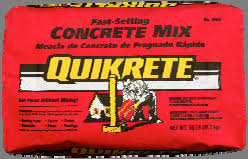When it comes to preparing soil for planting or maintaining a garden, a high-quality cultivator is an essential tool. Whether you’re a home gardener, a professional landscaper, or someone working on a larger agricultural project, selecting the right equipment makes a world of difference in terms of efficiency and results. Among the trusted names in gardening and landscaping tools, Milwaukee cultivator options have become a favorite for those seeking power, precision, and reliability.
In this guide, we’ll take a closer look at how to choose the right Milwaukee cultivator for your specific project, considering key factors like size, soil type, intended use, and more.
Understanding What a Cultivator Does
Before diving into brand-specific options, it’s important to understand the basic function of a cultivator. A cultivator is designed to loosen soil, remove weeds, and prepare the ground for planting. Unlike tillers, which are meant for breaking new ground or very tough soil, cultivators are more suitable for ongoing garden maintenance, mixing compost, and refreshing soil in flower beds or vegetable gardens.
Milwaukee’s cultivators offer a variety of attachments and accessories that make them incredibly versatile for both light-duty and heavy-duty gardening tasks.
Why Choose a Milwaukee Cultivator?
Milwaukee is well-known in the power tools industry, and its garden tool lineup, including its cultivators, reflects the brand’s commitment to innovation and durability. Here are a few reasons why choosing a Milwaukee cultivator makes sense:
-
Battery-Powered Efficiency: Milwaukee’s cultivators are often powered by their signature M18™ battery system, offering the convenience of cordless use without sacrificing power.
-
Durability: These tools are built to withstand rough handling and tough soil conditions, which is essential for long-term use.
-
Compatibility: Milwaukee cultivators often come as attachments for their M18 FUEL™ Outdoor Power Equipment line, meaning one tool base can serve multiple functions.
-
User-Friendly Design: Ergonomics matter, especially when working for extended periods. Milwaukee tools are known for being comfortable to use with intuitive controls.
Types of Projects and the Best Milwaukee Cultivator for Each
1. Small Home Gardens
For homeowners with small to medium-sized garden plots, a lightweight Milwaukee cultivator attachment is ideal. These compact models are perfect for:
-
Loosening soil between rows
-
Weeding around delicate plants
-
Mixing in compost or fertilizer
Recommended Option: Milwaukee M18 FUEL™ QUIK-LOK™ Cultivator Attachment
This attachment pairs with the M18 FUEL™ Power Head and is designed for precision and control in tight spaces.
2. Large Vegetable Gardens and Flower Beds
Larger gardens require more robust tools. If you have a larger area to maintain but still want the flexibility of a battery-powered device, the same M18 FUEL™ system with the cultivator attachment can serve well. The key here is the power-to-weight ratio and the efficiency you get from the battery system.
Benefits:
-
Extended battery life with M18 REDLITHIUM™ batteries
-
Versatility with other attachments for trimming, edging, or brush cutting
3. Landscaping and Commercial Use
Landscapers and contractors who regularly prepare soil for planting shrubs, flowers, or small trees need tools that can work all day without fail. For these users, a Milwaukee cultivator is a reliable choice when paired with high-capacity batteries and a proper maintenance routine.
Tip: Carry multiple M18 batteries for uninterrupted work and opt for the high-output versions for demanding jobs.
Features to Consider When Choosing a Milwaukee Cultivator
1. Power Source
Milwaukee’s cultivators are part of the M18 battery ecosystem. Make sure you already own or are willing to invest in the necessary batteries and chargers. This adds convenience if you use other Milwaukee tools.
2. Tine Design and Width
The size and shape of the tines (blades) affect how deep and wide you can cultivate. Milwaukee cultivator attachments typically offer adjustable tine widths, which is helpful for customizing the tilling to your garden’s specific needs.
3. Adjustability
Look for models that allow tine adjustments for width and depth. This feature helps you work efficiently whether you’re cultivating between narrow plant rows or covering a larger bed.
4. Weight and Maneuverability
Weight plays a role in how easy the tool is to handle. Lightweight models are easier to carry and maneuver, while heavier tools provide better ground penetration. Milwaukee’s ergonomic designs often strike a good balance between the two.
Maintenance Tips for Your Milwaukee Cultivator
To ensure your Milwaukee cultivator stays in top shape, follow these maintenance tips:
-
Clean After Every Use: Remove dirt and debris from the tines and housing to prevent rust and damage.
-
Check Tine Condition: Worn or bent tines reduce performance. Replace or straighten them as needed.
-
Battery Care: Store batteries in a cool, dry place and avoid overcharging to extend battery life.
-
Regular Inspection: Periodically inspect bolts and moving parts for tightness and wear.
Accessories and Add-Ons
Milwaukee’s QUIK-LOK™ system makes it easy to switch between different outdoor power tool heads, saving time and money. Beyond the cultivator, you might consider:
-
Edger Attachment: For clean garden borders
-
String Trimmer Head: For weed control
-
Brush Cutter: For heavy-duty clearing
This modularity means you can expand your toolkit without buying entirely new devices.
Conclusion
Choosing the right Milwaukee cultivator depends largely on your project needs, the size of the area, soil conditions, and how often you’ll use the tool. For home gardeners, Milwaukee’s battery-powered cultivators offer ease of use and portability. For professionals, the durability and multi-functionality of the Milwaukee system provide a solid return on investment.
With reliable performance, easy maintenance, and a wide range of compatible tools, Milwaukee cultivators are an excellent choice for anyone serious about gardening or landscaping. Make sure to assess your specific requirements and invest in the model that best fits your needs—your garden will thank you for it!



